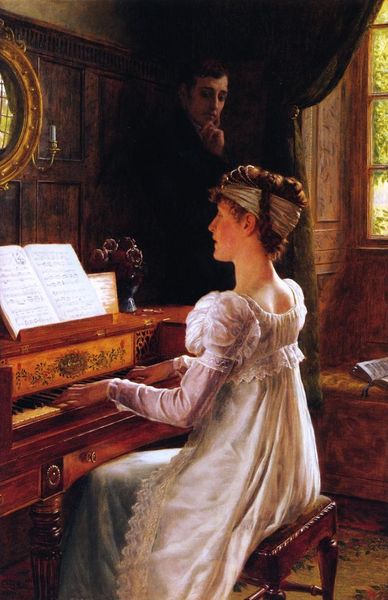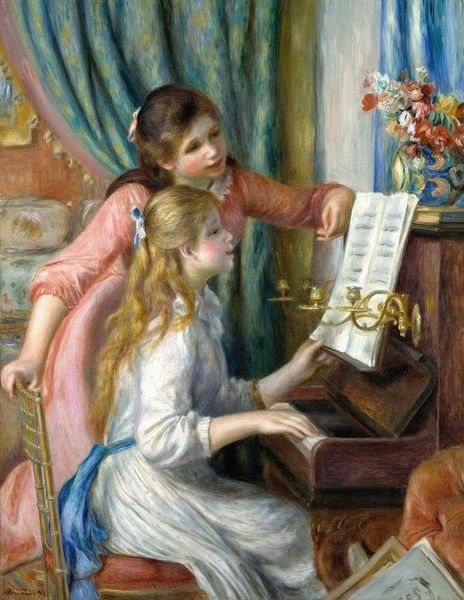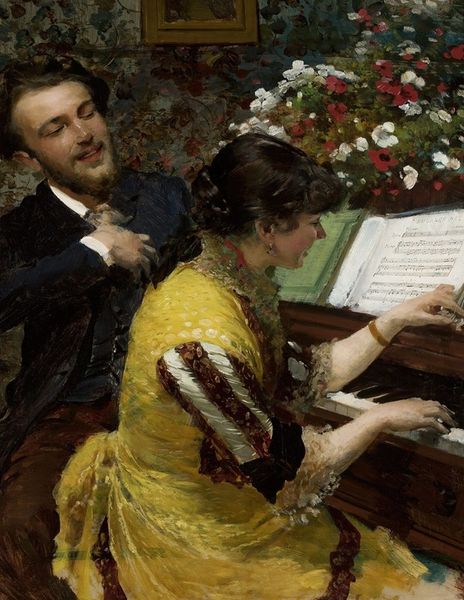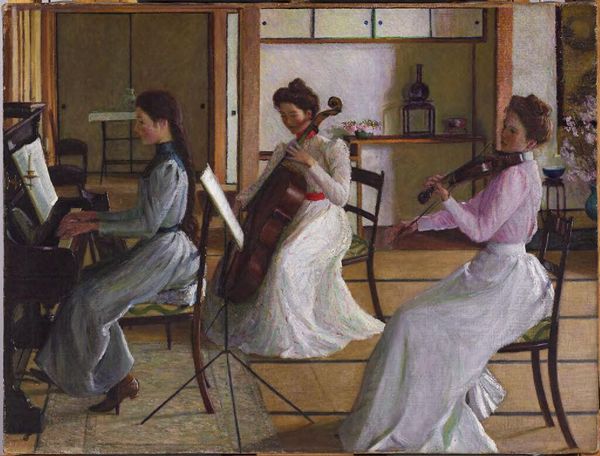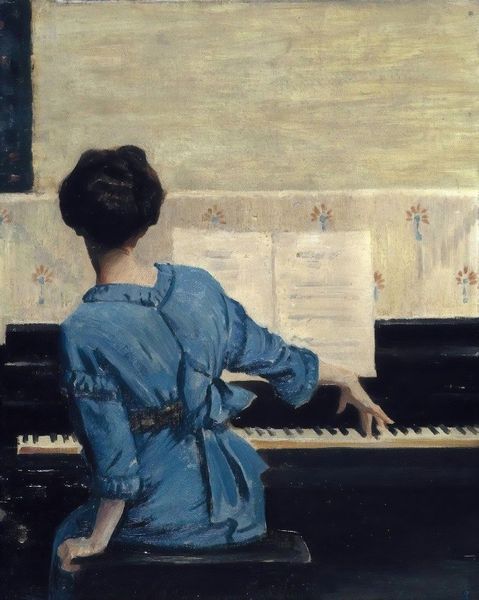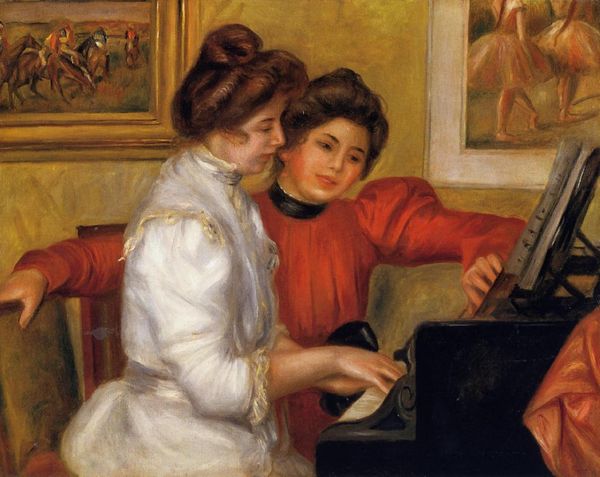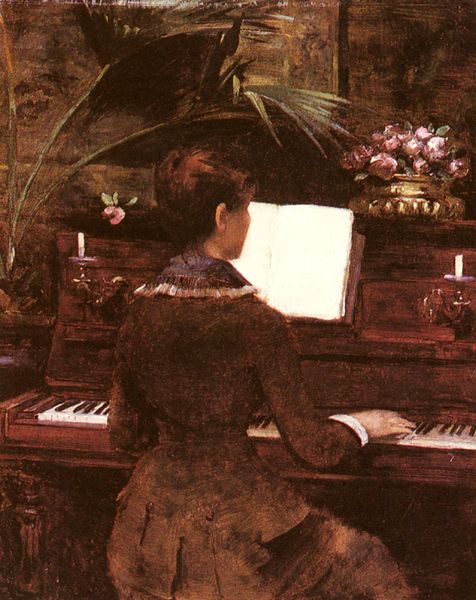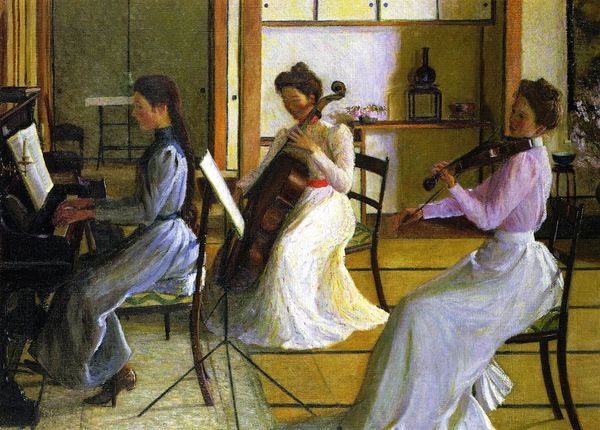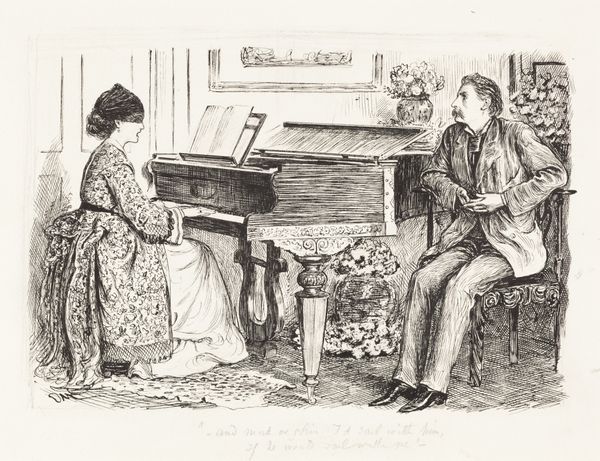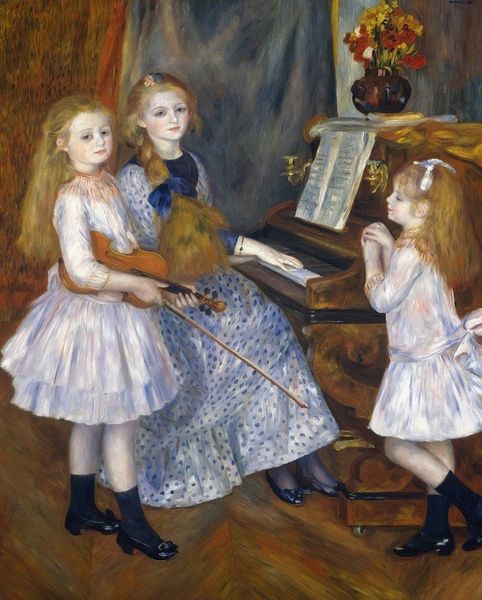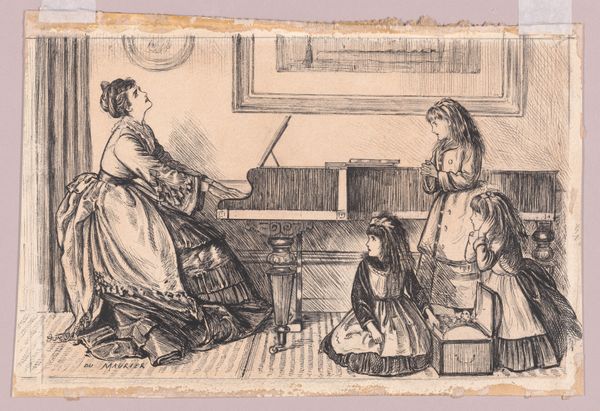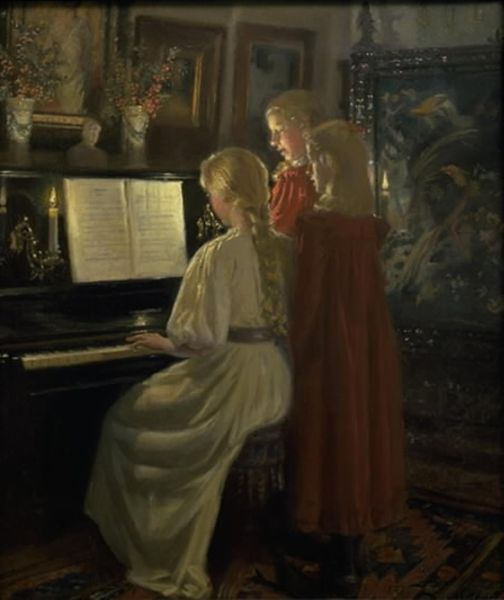
Dimensions: 158 x 98 cm
Copyright: Public domain
Silvestro Lega painted The Singing of the Folk Song with oil on canvas. He captured a slice of Italian bourgeois life. The painting style shows the influence of the Macchiaioli group. They reacted against academic conventions, preferring an emphasis on loose brushwork and strong blocks of color. Lega captures how light falls on surfaces, from the printed floral curtain to the women's patterned dresses. The textile patterns also catch my attention. The making of these complex cloth patterns would involve skilled weaving, dyeing, and printing. The piano itself is a feat of engineering and woodworking. Its polished wood gleams, while its keys await the touch of the pianist. This emphasis on materials and making processes ties the artwork to the social context of its creation, challenging the old divide between fine art and craft.
Comments
Join the conversation
Join millions of artists and users on Artera today and experience the ultimate creative platform.
artera almost 2 years ago
⋮
Silvestro Lega (1826-95) was an Italian Realist painter working during the Mazzini political movement that created modern Italy by ascribing to popular democracy in a Republican state. Lega's work depicts the sentiments and domestic pleasures that characterize the Italian petite bourgeoisie of this political era. After fighting in military campaigns for Italian independence, Lega began his series of large-scale paintings. The Lyric depicts three women singing before a piano, the large window behind them is open to the vast Italian countryside. Suggestive of the Three Graces in Greek mythology, these simple and understated figures portray a scene of peace, leisure, and intimacy. The curves of the women's waists are elegantly mirrored in the full-bodied droop of the drawn curtain. The soft, dark browns and muted pastels convey a sense of nostalgia, and of fecundity governed by restraint. Lega promoted the unified, modern Italian state by crafting moral values into the content of his paintings. Such images encourage the values and behaviors that lead a nation into social stability, by constructing a common memory of social harmony.
